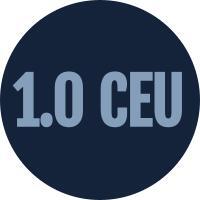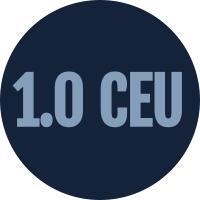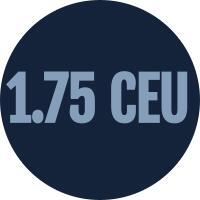
Catalog Advanced Search
-
The use and abuse of opioids within the United States is at crisis levels and has been declared a public health emergency by the U.S. Department on Health and Human Services in 2017. 130 Americans die every day from an opioid overdose and 11.4 million people misuse prescription opioids per year. The population of patients that athletic trainers work with daily is frequently prescribed opioids for pain management and are therefore an at risk population for opioid overdose. Naloxone can reverse the life-threatening respiratory depression associated with the opioid overdose, and athletic trainers, physician, EMS personnel, allied health professionals, and others must be knowledgeable in the most current…
Abstract:
The use and abuse of opioids within the United States is at crisis levels and has been declared a public health emergency by the U.S. Department on Health and Human Services in 2017. 130 Americans die every day from an opioid overdose and 11.4 million people misuse prescription opioids per year. The population of patients that athletic trainers work with daily is frequently prescribed opioids for pain management and are therefore an at risk population for opioid overdose. Naloxone can reverse the life-threatening respiratory depression associated with the opioid overdose, and athletic trainers, physician, EMS personnel, allied health professionals, and others must be knowledgeable in the most current recommendations and evidence regarding the prevention, recognition, and management of a patient in opioid overdose with naloxone, and must be able to bridge the gap between current evidence and knowledge and clinical competency and/or performance for professionals with regards to prevention, recognition, management, and recovery from opioid addiction.
Objectives:- Participants will be able to explain how a prehospital interprofessional healthcare team works collaboratively to improve patient outcomes.,
- Participants will be able to identify the current NATA and EMS recommendations regarding the prehospital management of the opioid overdose patient.,
- Participants will be able to identify opioids and drugs that increase overdose risk.,
- Participants will be able to identify and discuss myths and facts relative to opioids, overdoses, and overdose management.,
- Participants will be able to examine and discuss the current scientific evidence related to the opioid epidemic specifically focusing on (1) epidemiology; (2) at risk populations; (3) overdose prevention strategies; and (4) naloxone distribution programs.,
- Participants will be able to define, discuss, and differentiate the indications, contraindications, and mechanism of action of naloxone.,
- Participants will be able to describe and demonstrate skills needed for (1) effective management of airway, breathing, and circulation in the opioid overdose patient; and (2) the administration of naloxone.,
- Participants will be able to demonstrate the proper sequence and implementation of critical decision-making skills and the current evidence.,
- Participants will be able to understand state legislation pertaining to prevention strategies & naloxone.
Level:
Advanced
Domains:
Domain 1: Risk Reduction Wellness and Health Literacy
Domain 2: Assessment Evaluation and Diagnosis
Domain 4: Therapeutic Intervention
Domain 5: Health Care Administration and Professional ResponsibilityCEUs: 1.0 Category A
Keywords: addiction, life saving medication, overdose, mental health, opioid, drug use, naloxone

Darryl Conway, MA, LAT, ATC
Darryl Conway serves as the Senior Associate Athletic Director & Chief Health & Welfare Officer for University of Michigan Athletics, owner of Conway Ventures, LLC, and is Co‐Founder / Partner of Sports Medicine Emergency Management, LLC (SMEM). Darryl holds a Masters’ Degree from Adelphi University (’95) in Sports Medicine and Sports Management and a Bachelors’ Degree from the University of Delaware (’93) in Physical Education Studies and Athletic Training. In addition to being a certified member of the National Athletic Trainers’ Association (NATA), Darryl has worked with various SWAT Teams as their Tactical Medic and Athletic Trainer, and as a volunteer EMT, and has been an American Red Cross first aid, CPR, and AED instructor for 30 years. Darryl serves as the Chair of the NATA’s Ethnic Diversity Advisory Committee (EDAC), is a member of the NATA’s Diversity, Equity, Inclusion, & Advocacy (DEIA) Task Force, Michigan Athletic Trainers’ Society (MATS) Diversity, Equity, & Inclusion Committee, Michigan Athletic Trainers’ Society (MATS) AT Cares Committee, NATA Research & Education Foundation (REF) Development Task Force, & the NATA’s Educationalist Community Diversity Recruitment & Retention Work Group. Darryl served as Co‐Chair of the NCAA’s Diverse Student‐Athlete Mental Health & Well‐Being Task Force, is a member of the State of Michigan Board of Athletic Trainers, the State of Michigan Board of Athletic Trainers Disciplinary Sub‐Committee & Rules Sub‐Committee, the Board of Certification of Athletic Trainers (BOC) Reinstatement Committee, and previously served on the NATA Committee on Professional Ethics (COPE). Darryl also serves as an Instructor Trainer for American Red Cross CPR / AED / First Aid Instructor Courses, an Associate Expert with The Rehberg‐Konin Group, an Instructor & Ambassador with Stop the Bleed, and has worked as an Athletic Trainer at the Winter X Games and various Red Bull extreme events. Darryl was also a member of the Spine Injury in Sports Group (SISG), is a member of the Xenith Scientific Advisory Committee, and a consultant for RG Medical Diagnostics. Darryl was named as a Distinguished Athletic Trainer by the Michigan Athletic Trainers’ Society (MATS) in 2022, a Most Distinguished Athletic Trainer by the National Athletic Trainers’ Association (NATA) in 2019 and was recognized by the College Athletic Trainers’ Society (CATS) in 2018 with the prestigious Quality of Life Award.
-
Register
- Non-member - $25
- Member - $15
- Student - $15
- Staff - Free!
- More Information
-
Pitching is the fastest and most stressful motion the human body can produce. These large and repetitive forces lead to motion and strength deficits throughout the body, which can alter normal mechanics. This compensation is often missed since performance is not initially affected; however, the athlete is often at an increased risk of injury. As a clinician, it is essential to understand normal mechanics and the best way to assess without sophisticated motion analysis systems. In addition, clinicians need to know the components of a thorough kinetic chain assessment and most importantly how to integrate both into a comprehensive program.
Abstract:
Pitching is the fastest and most stressful motion the human body can produce. These large and repetitive forces lead to motion and strength deficits throughout the body, which can alter normal mechanics. This compensation is often missed since performance is not initially affected; however, the athlete is often at an increased risk of injury. As a clinician, it is essential to understand normal mechanics and the best way to assess without sophisticated motion analysis systems. In addition, clinicians need to know the components of a thorough kinetic chain assessment and most importantly how to integrate both into a comprehensive program.
Objectives:- Participants will be able to learn normal pitching mechanics and how to assess clinically.,
- Participants will be able to learn the common kinetic chain deficits in the baseball player.,
- Participants will be able to learn to perform a thorough full body kinetic chain assessment specific to baseball player.,
- Participants will be able to learn to develop a comprehensive program that integrates both pitching mechanics and kinetic chain deficit.
Level:
Advanced
Domains:
Domain 1: Risk Reduction Wellness and Health Literacy, Domain 2: Assessment Evaluation and Diagnosis, Domain 4: Therapeutic InterventionCEUs: 1.25 Category A
Keywords: elbow, shoulder, baseball, pitching, injury, kinetic chain,

Stephen J. Thomas, PhD, ATC, FNATA
Stephen Thomas is an Associate Professor and Chair of the Exercise Science Department at Thomas Jefferson University. He completed his undergraduate and master’s degree in Kinesiology, at Temple University. He then earned his Ph.D. in Biomechanics & Movement Science at the University of Delaware. Dr. Thomas received an NIH F32 postdoctoral research fellowship in the bioengineering of tendon at the McKay Orthopaedic Research Laboratory at the University of Pennsylvania. Dr. Thomas has research expertise in the adaptation of tissues to stress and overuse specifically at the shoulder. He is the current President of the American Society of Shoulder and Elbow Therapists. He is also a consultant for the Philadelphia Phillies and the Penn Throwing Clinic. His training in both basic science and applied research methods allows him to address clinically relevant questions with translation approaches thereby bridging the gap between bench and bedside. His initial work has contributed to the understanding of tissue adaptations in throwing athletes and how they relate to overuse shoulder injuries using novel diagnostic ultrasound methods. In addition, his basic science work studying the tissue and biologic adaptations to chronic rotator cuff tears and the effects of type II diabetes has also helped progress the current field. His current research agenda is two-fold and includes integration of translational research to investigate 1) the structural and biologic mechanisms governing soft tissue adaptation caused by the repetitive stress of throwing and the association with throwing biomechanics and 2) the structural, neuromuscular, and biologic adaptations occurring due to chronic rotator cuff tears and repairs.
-
Register
- Non-member - $31.25
- Member - $18.75
- Student - $18.75
- Staff - Free!
- More Information
-
The area of psychosocial intervention and referral in athletic training is especially problematic for both athletic training educators and their students. Recent consensus statements have detailed the importance of emergent mental health referrals in both high school and collegiate settings. However, research suggests that athletic trainers are comfortable knowing when to refer but are not comfortable with the actual act of approaching an athlete for referral. Teaching these skills with appropriate practical follow-up is difficult because there are, understandably, limited practice opportunities for student skill development in the clinical setting. In order to be effective…
This presentation is a replay from 2019 NATA Athletic Training Educators' Conference, offering a second chance to experience the event's valuable content and insights.
Abstract:
The area of psychosocial intervention and referral in athletic training is especially problematic for both athletic training educators and their students. Recent consensus statements have detailed the importance of emergent mental health referrals in both high school and collegiate settings. However, research suggests that athletic trainers are comfortable knowing when to refer but are not comfortable with the actual act of approaching an athlete for referral. Teaching these skills with appropriate practical follow-up is difficult because there are, understandably, limited practice opportunities for student skill development in the clinical setting. In order to be effective, educational strategies must extend beyond lectures and focus on the psychomotor skills and abilities to help foster positive communication which leads to adequate referral. Further, the education must go beyond the signs and symptoms of specific mental health issues and focus on appropriate intervention for a person in crisis (regardless of underlying condition). The purpose of this presentation is to present a course module, developed jointly by a licensed professional counselor and an athletic trainer, with these skills and abilities in mind. The presentation will present the components of the entire module including course content materials, activities used to teach the appropriate skills and all grading documents that have been developed an actual recorded video of student interactions in a role-play situation along with rubrics developed for grading intervention behaviors will be shared.
Objectives:- Participants will be able to identify the anatomy of a referral session for an athlete in crisis.,
- Participants will be able to identify appropriate communication strategies to use during a crisis intervention.,
- Participants will be able to identify important body language necessary to foster an appropriate rapport with the athlete.,
- Participants will be able to evaluate a video of a mocked referral session using assessment rubrics to provide feedback.,
- Participants will be able to identify common errors that students make when attempting these skills.
Level:
Essential
Domains:
Domain 2: Assessment Evaluation and DiagnosisCEUs: 0.75 Category A
Keywords: mental health, students, crisis, intervention, psychosocial

Angela Mickle, PhD, ATC

Nadine Hartig, PhD, LCSW, LPC
Nadine Hartig is a Licensed Professional Counselor (VA) and a Licensed Clinical Social Worker (CO). She holds a master’s degree in Social Work from the University of Wisconsin-Madison (1996) and a doctorate in Counselor Education and Supervision from the University of Northern Colorado (2004). She is a registered play therapist (RPT), Board Certified Tele-mental Health practitioner, and EMDRIA trained in EMDR. She has over twenty-five years of clinical experience in a variety of settings, including universities, community mental health centers, K-12 schools, crisis settings, private practice, the State Public Defender’s Office, domestic violence and trauma centers, integrated behavioral health, and dual diagnosis treatment. She has been part of Radford University’s faculty since 2006, where she holds rank as Professor and serves as the chairperson of the Department of Counselor Education. She also serves as the Director for the Center of Integrated Health and Wellness. She has taught across the counseling core, school counseling, couples and family counseling, and clinical mental health curricula for over fifteen years. Her areas of interest include trauma treatments, counseling children and adolescents, integrated health, wellness, supervision, leadership, sport performance, and career development.
-
Register
- Non-member - $18.75
- Member - $11.25
- Student - $11.25
- Staff - Free!
- More Information
-
The purpose of this presentation is to examine and discuss current and emerging liability exposures confronting athletic training professionals. Our goal is to help athletic trainers understand their major areas of vulnerability and take appropriate action to protect their patients from harm and themselves and their employers from potential litigation. This presentation will feature claim scenarios and high-level risk control recommendations which, if implemented appropriately, can help prevent incidents and increase patient satisfaction while minimizing exposure to lawsuits and licensure/certification actions.
Abstract:
The purpose of this presentation is to examine and discuss current and emerging liability exposures confronting athletic training professionals. Our goal is to help athletic trainers understand their major areas of vulnerability and take appropriate action to protect their patients from harm and themselves and their employers from potential litigation. This presentation will feature claim scenarios and high-level risk control recommendations which, if implemented appropriately, can help prevent incidents and increase patient satisfaction while minimizing exposure to lawsuits and licensure/certification actions.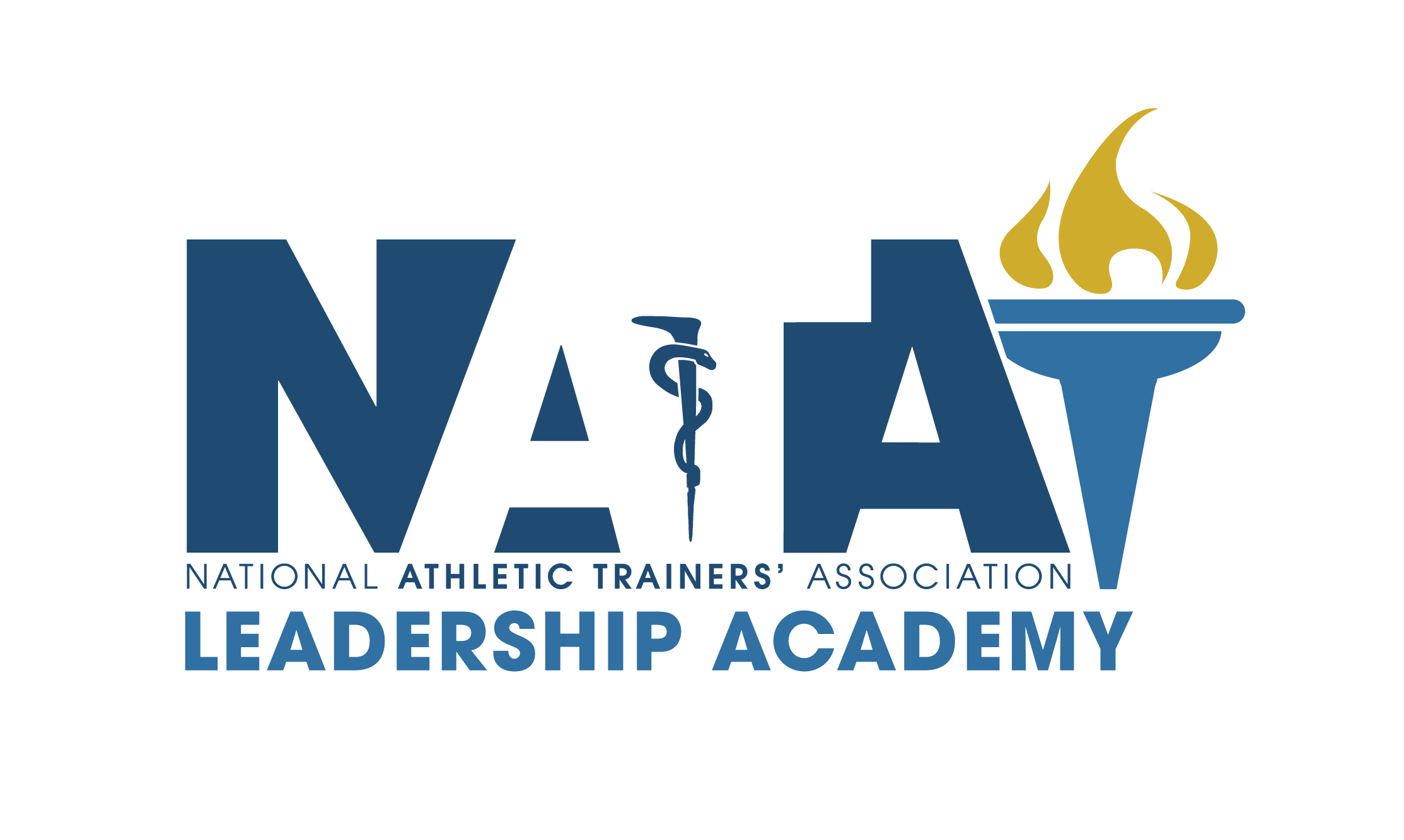 This On-Demand course is a Leadership Academy offering.
This On-Demand course is a Leadership Academy offering. Objectives:
- Participant will be able to understand the most common claims of negligence made against Athletic Trainers in malpractice lawsuits.,
- Participant will be able to understand the most common patient injuries in malpractice lawsuits.,
- Participant will be able to identify key risk management tools Athletic Trainers can incorporate into their practice.
Level:
Essential
Domains:
Domain 5: Health Care Administration and Professional ResponsibilityCEUs: 1.25 Category A
Keywords: legal, law, malpractice, risk management, negligence, liability, leadership,

Jennifer Flynn, CPHRM
Jennifer Flynn, CPHRM, is Vice President of Risk Management for Nurses Service Organization in the Healthcare Division of Aon’s Affinity Insurance Services, Inc. Specializing in risk management and having worked in the health care insurance business for over 21 years, Jennifer is dedicated to educating nurses and health care professionals on professional liability risks and offers strategies to mitigate those risks by supporting patient safety principles and developing quality management programs. In addition to being a frequent national speaker on healthcare risk and liability, Jennifer is also a published author on various risk management topics. Jennifer is a Certified Professional in Healthcare Risk Management and is a licensed Property & Casualty agent. She earned a BA in Psychology from Arcadia University in Glenside, Pennsylvania.

Lynn Pierce, BSN, RN, CPHRM
Lynn Pierce, BSN, RN, CPHRM, is a risk control director for CNA Healthcare. Prior to joining CNA, she worked in such clinical settings as emergency, surgical and cardiac critical care, and cardiac and orthopedic rehabilitation services. She has served as a director of risk management in acute care hospitals and integrated health care systems and has held leadership positions in risk management, quality, HIPAA privacy, environmental and patient safety, case management, corporate compliance, Workers’ Compensation and infection prevention. In 2002, she became a certified legal nurse consultant. She earned her BSN from the University of West Georgia in Carrollton, Georgia.
-
Register
- Non-member - $31.25
- Member - $18.75
- Student - $18.75
- Staff - Free!
- More Information
-
Treatment strategies based on recent evidence and best practices will be demonstrated, allowing the attendee to effectively integrate the information into a post-operative rehabilitation program. The presenters will also share evidence to support the use of manual treatment techniques to address concomitant pathological conditions (joint mobility, spinal alignment, myofascial pain) associated with shoulder dysfunction.
Abstract:
Treatment strategies based on recent evidence and best practices will be demonstrated, allowing the attendee to effectively integrate the information into a post-operative rehabilitation program. The presenters will also share evidence to support the use of manual treatment techniques to address concomitant pathological conditions (joint mobility, spinal alignment, myofascial pain) associated with shoulder dysfunction.
Objectives:- Participants will be able to based on the available evidence, develop a non-operative rehabilitation program for patients with SLAP lesions.,
- Participants will be able to explain best practices for the clinical evaluation of athletes with a SLAP lesion.,
- Participants will be able to interpret results of clinical and diagnostic testing, and explain the common surgical procedures utilized.,
- Participants will be able to develop an appropriate post-operative rehabilitation program based upon the available evidence.
Level:
Essential
Domains:
Domain 2: Assessment Evaluation and Diagnosis
Domain 4: Therapeutic InterventionCEUs:
1.75 Category AKeywords: Superior labral anterior posterior, shoulder, rehabilitation, SLAP lesion, treatment
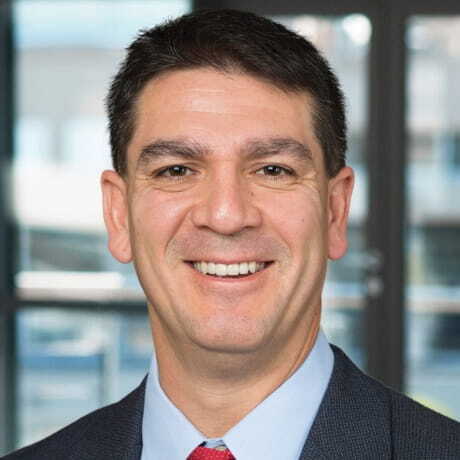
James Onate, PhD, ATC, FNATA
Dr. Jimmy Onate joined The Ohio State University in January 2010. He earned his PhD in Human Movement Science from the University of North Carolina at Chapel Hill in 2002 with a focus in biomechanics and motor learning. He has been an academic research faculty member interested in all aspects of human movement relative to injury prevention and performance optimization since 2003. He currently serves as the director of the PhD program in Health and Rehabilitation Sciences, chair of graduate studies in Health and Rehabilitation Sciences, a co-director of Ohio State's Sports Medicine's Movement Analysis & Performance (MAP) research program, a research scholar for the National Federation of High School Sports Medicine Advisory Committee, and a research consultant to Naval Special Warfare groups based in Virginia Beach, VA.His main research focus lies in developing functional motion assessment research that bridges the gap across research to clinical systems to allow for evidence-based outcomes for aiding individuals to sustain optimal health and performance throughout their careers and lives.
Research Focus
The specific aims of his research are focused to answer specific issues related to lower extremity injury, in particular anterior cruciate ligament (ACL) injury, pre-participation examinations and human performance optimization. Funding for his work has been provided through the National Institutes of Health, Office of Naval Research, United States Special Operations Command and Naval Special Warfare Development Group for evaluating lower extremity injury in collegiate athletes and the development of physical performance models in military soldiers. The interaction of these two areas initially seems distinct, yet his approach to the questions lies along the fundamental concept of creating a parsimonious screening approach for evaluating injury risk and performance enhancement for physically active individuals, utilizing the movement assessment information to develop an instructional feedback approach to enhance performance and prevent injury and to integrate these two approaches into an implementable scientific model-driven approach to aid physically active individuals throughout their careers and lifetime to optimize health and performance. Dr. Onate acts as a key component in building the bridges between exercise and performance areas relative to all aspects of personalized health care in the hopes of developing proactive integrative approaches for wellness-based medicine aimed at optimizing lifelong health and performance.
-
Register
- Non-member - $43.75
- Member - $26.25
- Student - $26.25
- Staff - Free!
- More Information
-
There are over 100 different physical examination tests described to evaluate the shoulder. Confusion exists with regard to not only the proper technique but the validity of commonly used tests. In today's fast paced environment evidence based accuracy and efficiency when examining athletes is very important. This presentation will review the proper technique and statistical validation, and relevance of the best tests based on current literature. The discussion will include a demonstration of an efficient sequence and algorithm incorporating all necessary tests to complete a thorough and comprehensive examination of the shoulder.
Abstract:
There are over 100 different physical examination tests described to evaluate the shoulder. Confusion exists with regard to not only the proper technique but the validity of commonly used tests. In today's fast paced environment evidence based accuracy and efficiency when examining athletes is very important. This presentation will review the proper technique and statistical validation, and relevance of the best tests based on current literature. The discussion will include a demonstration of an efficient sequence and algorithm incorporating all necessary tests to complete a thorough and comprehensive examination of the shoulder.
Objectives:- Participants will be able to describe the history and proper indications for the most commonly used shoulder exam tests.,
- Participants will be able to explain basic statistical terms (i.e., sensitivity, specificity, diagnostic accuracy) to describe the validity of physical exam tests.,
- Participants will be able to describe the proper technique for performing shoulder exam tests.
Level:
Advanced
Domains:
Domain 2: Assessment Evaluation and DiagnosisCEUs:
0.75 Category AKeywords: shoulder, examination, tests, diagnostic, pitching, throwing,
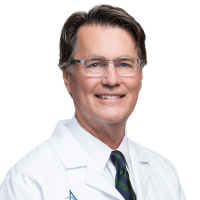
Steve Jordan, MD
Dr. Steve Jordan is a board certified, fellowship trained orthopaedic surgeon. Dr. Jordan earned his Medical Degree from Medical University of South Carolina. Dr. Jordan specializes in sports medicine; however, he takes a special interest in shoulder injuries, throwing injuries, ACL reconstruction, and Tommy John reconstruction. Dr. Jordan is the Team Physician for both Washington High School and Chipola College.
-
Register
- Non-member - $18.75
- Member - $11.25
- Student - $11.25
- Staff - Free!
- More Information
-
Ankle impingement is a problem that involves compression of soft/bony tissue with ankle motion. Impingement can be a significant problem for individuals impacting normal motion and leading to compensatory adaptations. This presentation will review ankle anatomy, common causes of impingement, imaging options, and treatment considerations.
Abstract:
Ankle impingement is a problem that involves compression of soft/bony tissue with ankle motion. Impingement can be a significant problem for individuals impacting normal motion and leading to compensatory adaptations. This presentation will review ankle anatomy, common causes of impingement, imaging options, and treatment considerations.
Objectives:- Participants will be able to identify signs and symptoms of ankle impingement.,
- Participants will be able to describe considerations for imaging.,
- Participates will be able to outline treatment options for athletes with ankle impingement.
Level:
Essential
Domains:
Domain 2: Assessment Evaluation and Diagnosis, Domain 4: Therapeutic InterventionCEUs:
0.75 Category AKeywords: ankle impingement, treatment, imaging, motion, compression

Eric Nussbaum, MEd, ATC, LAT
Eric Nussbaum is an athletic trainer at University Orthopaedic Associates with 30+ years of experience in all levels of athletics. He received a graduate degree in athletic training from the University of Virginia in Charlottesville, VA as well as an undergraduate degree from Millersville University of Pennsylvania in Millersville, PA.
Accomplishments
- Extensive experience in athletic training for both amateur and professional teams
- Amateur: Hillsborough High School, Rutgers University, Team USA, Men’s Lacrosse Team, University of Virginia, and at the Lake Placid Olympic Training Center
- Professional: Philadelphia Eagles
- Clinical Instructor, Department of Orthopaedic Surgery, Rutgers – Robert Wood Johnson Medical School
- Current Athletic Trainer at Colts Neck High School
- Past President of Athletic Trainers’ Society of New Jersey (ATSNJ)
- Member of Athletic Trainers’ Society of New Jersey (ATSNJ) Hall of Fame
- Member NJSCA Hall of Fame (NJ State Coaches Association)
- Speaker at numerous national, regional, state and local meetings
- Published author of multiple journal articles and book chapters
- Past Executive Committee Member of National Athletic Trainers’ Association (NATA), District 2
- Received multiple distinguished service awards
- Founding Member of the College Athletic Trainers Society
- Involved with new research on high ankle sprains and adolescent overuse injury
-
Register
- Non-member - $18.75
- Member - $11.25
- Student - $11.25
- Staff - Free!
- More Information
-
Evidence-based practice compels clinicians to challenge existing paradigms, especially when desired outcomes remain elusive. Insidious lateral knee pain involving the iliotibial band (ITB) in running based athletes has been conceptualized as ITB friction syndrome, an unsubstantiated clinical paradigm based on Renne's 1975 theory that the ITB rolls over the lateral femoral epicondyle during repetitive flexion/extension movements, irritating the ITB and underlying bursa. Contemporary anatomical, biomechanical, and interventional evidence directly challenges this long-held paradigm. Given this new evidence, ITB Impingement Syndrome is presented as a more robust, evidence-informed paradigm for evaluating and treating problematic ITB related pathologies.
Abstract:
Evidence-based practice compels clinicians to challenge existing paradigms, especially when desired outcomes remain elusive. Insidious lateral knee pain involving the iliotibial band (ITB) in running based athletes has been conceptualized as ITB friction syndrome, an unsubstantiated clinical paradigm based on Renne´s 1975 theory that the ITB rolls over the lateral femoral epicondyle during repetitive flexion/extension movements, irritating the ITB and underlying bursa. Contemporary anatomical, biomechanical, and interventional evidence directly challenges this long-held paradigm. Given this new evidence, ITB Impingement Syndrome is presented as a more robust, evidence-informed paradigm for evaluating and treating problematic ITB related pathologies.
Objectives:- Participants will be able to distinguish between the existing and widely held paradigm for ITB pain and dysfunction known as iliotibial friction syndrome and the newly proposed iliotibial band impingement syndrome.,
- Participants will be able to evaluate athletes presenting with ITB impingement syndrome, based on a new biomechanically based and evidence-informed model of assessment that focuses on deficient hip muscle function.,
- Participants will be able to design and implement more effective, evidence-informed treatment programs for athletes suffering from ITB impingement syndrome by focusing on greater closed chain gluteal muscle function and timing.
Level:
Advanced
Domains:
Domain 1: Risk Reduction Wellness and Health Literacy, Domain 2: Assessment Evaluation and Diagnosis, Domain 4: Therapeutic InterventionCEUs: 1.0 Category A
Keywords: knee, iliotibial band, ITB, impingement, bursa, running,

Paul Geisler, EdD, AT Ret.
Associate Dean Geisler is a native of Lakeville, MA and current resident of Boston, MA. A certified athletic trainer since 1987 with over 15 years of varied clinical practice and 23 years' experience directing athletic training education programs at Georgia Southern University and Ithaca College. He is deeply interested in the development and assessment of the medico-clinical thinking processes of novice and experienced clinicians, the development of adaptive expertise in clinicians, progressive curriculum design, capability-based education, and meaningful programmatic assessment. He has over 170 national and international presentations and publications on clinical and educational based subjects in athletic training and health professions education to his credit. He is a member of the European Board of Medical Assessors, and past member of the Association of Medical Education, Europe.
As a scholar, he is the recipient of two manuscript awards from the Journal of Athletic Training and the Athletic Training Education Journal. For his many professional contributions, he has been the recipient of the NATA Athletic Training Service Award and NATA Most Distinguished Athletic Trainer Award. As an educator, he was awarded the NATA Executive Council on Education's Sayers "Bud" Miller Distinguished Educator Award in 2021 and has received two Dean's Awards for Excellence & Innovation in Teaching, a Dean's Excellence Award for Diversity and Inclusion in Teaching and Learning, and the all college Faculty Excellence Award, all from Ithaca College.
He admits to being an enthusiastic but slow road cyclist, an amateur shutterbug of nature and wonder, an aspiring wine snob and amateur foodie, and an unabashed promoter of equal rights, freedom, justice, and authentic democracy for all living beings. Susan, his life partner and wife of 34 years and he are fulfilled parents of two amazing young men – Nicholas, a writer living in Los Angeles, CA and Benjamin, a photographer and artist living in Brooklyn, NY.
Series Content Where I am Featured:
Master Preceptor Level Two - Module Five-
Register
- Non-member - $25
- Member - $15
- Student - $15
- Staff - Free!
- More Information
-
The National Athletic Trainers Association created a task force in 2017 to revise and update the 2003 Appropriate Medical Care for the Secondary School Aged Athletes consensus statement. Based upon new research, the previous document was revised to reflect current research, language and current practices. The newly approved standards clearly identify specific areas where organizations should focus their resources and energy to provide best practices athletic health care to their secondary school aged athletes. A case study will be presented showcasing how an athletic trainer used the standards and an online tool to improve the health care at her school and build her athletic training program.
Abstract:
The National Athletic Trainers Association created a task force in 2017 to revise and update the 2003 Appropriate Medical Care for the Secondary School Aged Athletes consensus statement. Based upon new research, the previous document was revised to reflect current research, language and current practices. The newly approved standards clearly identify specific areas where organizations should focus their resources and energy to provide best practices athletic health care to their secondary school aged athletes. A case study will be presented showcasing how an athletic trainer used the standards and an online tool to improve the health care at her school and build her athletic training program.
Objectives:- Participants will be able to illustrate the process used to create the document.,
- Participants will be able to distinguish the 12 standards and sub-standards identified in this process.,
- Participants will be able to analyze and apply the potential uses of the tool in evaluation of their organizations current status.,
- Participants will be able to evaluate their organization and recommend changes to the the medical care they provide to secondary school aged athletes.
Level:
Advanced
Domains:
Domain 5: Health Care Administration and Professional ResponsibilityCEUs:
1.75 Category AKeywords: best practices, high school, secondary, medical care, standards

Larry Cooper, MS, LAT, ATC
Larry Cooper, MS, LAT, ATC is a former District 2 Secretary and Chair of the National Athletic Trainers Association (NATA) Secondary School Athletic Trainers Committee (SSATC). Currently retired from teaching, he was a Health, Physical Education and Sports Medicine Teacher and Certified Athletic Trainer for 35 years with the majority of that time at Penn Trafford High School in Harrison City, Pennsylvania.
His entire career was spent working in and advocating for the secondary school athletic trainer. In addition, he has held numerous leadership positions within the Pennsylvania Athletic Trainers Society (PATS). Larry is a founding member of the Western Pennsylvania Interscholastic Athletic Leagues (WPIAL) Sports Medicine Advisory Committee and has presented at the national, district, regional and state levels.
He is a member of the NATA and PATS Hall of Fame and has received numerous awards at the state, district and national levels.

Bart Peterson, MSS, ATC
Bart Peterson earned his Bachelor of Science in Athletic Training from Brigham Young University in 1989. He then worked as a Certified Athletic Trainer and Educator for Campbell County School District, before returning to earn his MSS in Sport Management from the United States Sports Academy in 1998. In 2000, Bart took a position at Palo Verde Magnet High School, where he continues to work as an Athletic Trainer, Educator, and Athletic Director from 2010-2014. Bart has served as a Staff Athletic Trainer for the USA Arizona Regional Cheerleading Competition, USA Volleyball High Performance Camp and Championship, and US National Baton Twirling Championships in addition to numerous other events. He has served as the President of the Wyoming Athletic Trainers’ Association (1992-1998), Secretary of RMATA (2004-2010), and presently on the Board of Athletic Training for NATA as the Governor’s Appointment for the State of Arizona. Bart received that NATA Most Distinguished Athletic Trainer Award in 2015 and was inducted into the RMATA Hall of Fame. He recalls being surrounded by Hall of Famers his entire career who have mentored him and taught him to “leave a place better then he found it.” Bart says, “I love being able to help my students overcome trials and become better at what they are doing. I love being able to help them grow and develop. We have the best profession.” Bart is married to his wife, Cori, of 25 years and has five children: Courtney, Bryce, Gerritt, Tanner and Spencer.

Jamie Woodall, MPH, LAT, ATC
Jamie Woodall is the Executive Director of School Safety for Waller ISD. Woodall joined the WISD family with 17 years of experience in public education and has been recognized at both the state and national levels for her important work to build school health and safety measures.
Woodall’s passion for school safety includes a multidisciplinary approach to classroom and campus safety, sports safety, transportation procedures, as well as training developed for administrators, staff, students, parents, and community members. She comes to WISD from Brenham ISD where she served as the director of health and safety. Woodall also led work in both Brenham and Bryan ISDs to earn the national Safe Sport School Award and plans to achieve the same status in collaboration with WISD athletic trainers. In Brenham, she was recognized for her ability to create collaboration and a comprehensive approach to school safety that resulted in robust products to equip all stakeholders in the event of an emergency.
Woodall earned her Master of Public Health; emphasis in Prevention Programs in School Safety from the University of North Texas and her Bachelor of Science degree in Kinesiology from Sam Houston State University.
-
Register
- Non-member - $43.75
- Member - $26.25
- Student - $26.25
- Staff - Free!
- More Information
-
Sexual harassment is a growing concern in all settings. Athletic trainers should feel safe in their jobs. Athletic training students should feel safe in their programs, whether in the didactic or clinical setting. The CAATE creates standards to keep the students safe, the BOC has Standards of Practice, the NATA has the Code of Ethics, all of which should protect the practitioner, the student, and the patients from sexual harassment. However, recent developments demonstrate that there is something missing from education and understanding what constitutes sexual harassment.
Abstract:
Sexual harassment is a growing concern in all settings. Athletic trainers should feel safe in their jobs. Athletic training students should feel safe in their programs, whether in the didactic or clinical setting. The CAATE creates standards to keep the students safe, the BOC has Standards of Practice, the NATA has the Code of Ethics, all of which should protect the practitioner, the student, and the patients from sexual harassment. However, recent developments demonstrate that there is something missing from education and understanding what constitutes sexual harassment.
Objectives:- Participants will be able to describe the continuum of sexual exploitation.,
- Participants will be able to devise a plan for training athletic training students and/or staff on sexual harassment.,
- Participants will be able to explain the steps to take if faced with a sexual harassment situation.
Level:
Essential
Domains:
Domain 5: Health Care Administration and Professional ResponsibilityCEUs:
0.75 Category AKeywords: sexual harassment, exploitation, code of ethics, safety

Dani Moffit, PhD, LAT, ATC
Dr. Moffit is the Program Director of the Master of Science in Athletic Training program at Idaho State University. Prior to teaching at the post-secondary level, Dani taught and was an athletic trainer for the Meridian School District in Meridian, Idaho for 10 years. She volunteers her time with the profession, including work with the National Athletic Trainers’ Association, the Commission on Accreditation of Athletic Training Education, the Board of Certification, and the Pocatello Free Clinic. Dani’s current research passions range from sexual harassment perceptions in athletic training to cultural education in health professions.
-
Register
- Non-member - $18.75
- Member - $11.25
- Student - $11.25
- Staff - Free!
- More Information

